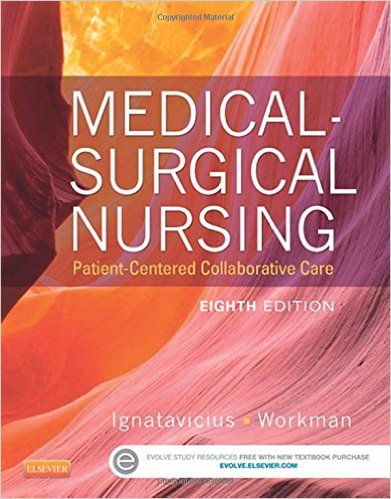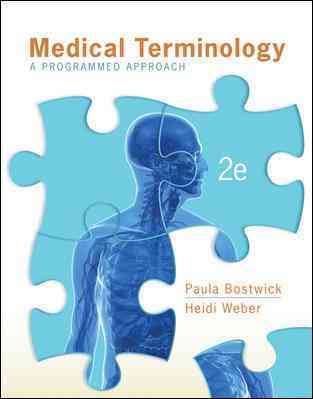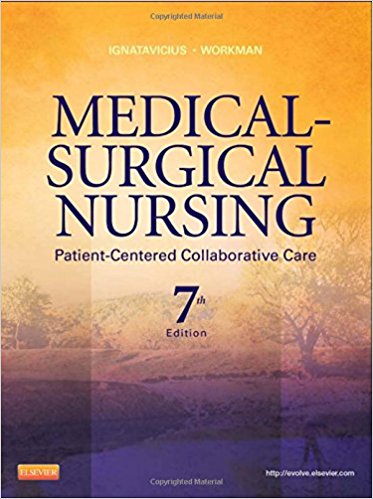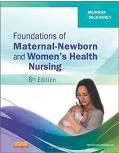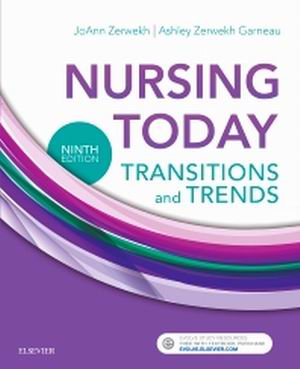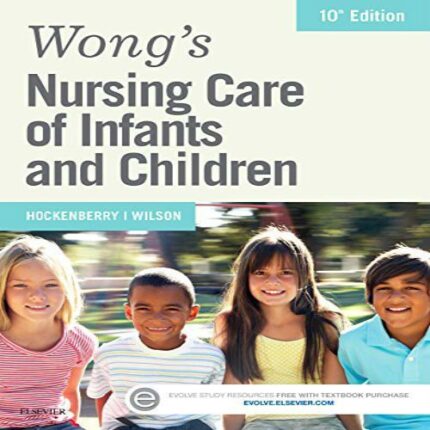Medical Surgical Nursing Patient Centered Collaborative Care, 8th Edition by Donna D. Ignatavicius – Test Bank
Chapter 4: Genetic and Genomic Concepts for Medical-Surgical Nursing
Ignatavicius: Medical-Surgical Nursing, 8th Edition
MULTIPLE CHOICE
1. A nurse is educating a client about genetic screening. The client asks why red-green color
blindness, an X-linked recessive disorder noted in some of her family members, is expressed
more frequently in males than females. How should the nurse respond?
a. “Females have a decreased penetrance rate for this gene mutation and are therefore
less likely to express the trait.”
b. “Females have two X chromosomes and one is always inactive. This inactivity
decreases the effect of the gene.”
c. “The incidence of X-linked recessive disorders is higher in males because they do
not have a second X chromosome to balance the expression of the gene.”
d. “Males have only one X chromosome, which allows the X-linked recessive
disorder to be transmitted from father to son.”
ANS: C
Because the number of X chromosomes in males and females is not the same (1:2), the
number of X-linked chromosome genes in the two genders is also unequal. Males have only
one X chromosome, a condition called hemizygosity, for any gene on the X chromosome.
As a result, X-linked recessive genes have a dominant expressive pattern of inheritance in
males and a recessive expressive pattern of inheritance in females. This difference in
expression occurs because males do not have a second X chromosome to balance the
expression of any recessive gene on the first X chromosome. It is incorrect to say that one X
chromosome of a pair is always inactive in females, or that females have a decreased
penetrance rate for this gene mutation. X-linked recessive disorders cannot be transmitted
from father to son, but the trait is transmitted from father to all daughters who will be
carriers.
DIF: Understanding/Comprehension REF: 59
KEY: Genetics| sex-linked recessive MSC: Integrated Process: Teaching/Learning
NOT: Client Needs Category: Health Promotion and Maintenance
2. A client is typed and crossmatched for a unit of blood. Which statement by the nurse
indicates a need for further genetic education?
a. “Blood type is formed from three gene alleles: A, B, and O.”
b. “Each blood type allele is inherited from the mother or the father.”
c. “If the client’s blood type is AB, then the client is homozygous for that trait.”
d. “If the client has a dominant and a recessive blood type allele, only the dominant
will be expressed.”
ANS: C
There are three possible gene alleles: A, B, and O. Blood type is determined by only two of
the three specific gene alleles. The blood type OO is homozygous in contrast to the blood
type AB, which is heterozygous. In the blood type AO, the gene allele A is dominant and
will be expressed as blood type A. It is true that each blood type allele is inherited from the
mother or the father.DIF: Understanding/Comprehension REF: 58
KEY: Genetics| gene| allele| blood type
MSC: Integrated Process: Nursing Process: Intervention
NOT: Client Needs Category: Physiological Integrity: Physiological Adaptation
3. A nurse cares for a client of Asian descent who is prescribed warfarin (Coumadin). What
action should the nurse perform first?
a. Schedule an international normalized ratio (INR) test to be completed each day.
b. Initiate fall precautions and strict activity limitations.
c. Teach the client about bleeding precautions, including frequent checks for any
bruising.
d. Confirm the prescription starts warfarin at a lower-than-normal dose.
ANS: D
Most individuals of Asian heritage have a single nucleotide polymorphism in the CYP2C19
gene that results in low activity of the enzyme produced. This mutation greatly reduces the
metabolism of warfarin, leading to increased bleeding risks and other serious side effects.
Any person of Asian heritage who needs anticoagulation therapy should be started on very
low dosages of warfarin and should have his or her INR monitored more frequently. The
nurse can always teach about the risk of bleeding and can monitor for any bruising. The
priority action is for the nurse to check the prescription and confirm the dose prior to
administering the medication. It is not necessary to initiate fall precautions and to limit
activity based on the administration of warfarin.
DIF: Applying/Application REF: 56
KEY: Genetics| genetic mutations| cultural awareness
MSC: Integrated Process: Nursing Process: Implementation
NOT: Client Needs Category: Physiological Integrity: Pharmacological and Parenteral
Therapies
4. A nurse obtains health histories when admitting clients to a medical-surgical unit. With
which client should the nurse discuss predisposition genetic testing?
a. Middle-aged woman whose mother died at age 48 of breast cancer
b. A young man who has all the symptoms of rheumatoid arthritis
c. Pregnant woman whose father has sickle cell disease
d. A middle-aged man of Eastern European Jewish ancestry
ANS: A
A client with a family history of breast cancer should be provided with information about
predisposition testing. Predisposition testing should be discussed with clients who are at
high risk of hereditary breast, ovarian, and colorectal cancers so that the client can engage in
heightened screening activities or interventions that reduce risk. The client with symptoms
of rheumatoid arthritis should be given information about symptomatic diagnostic testing.
The client with a familial history of sickle cell disease and the client is of Eastern
European Jewish ancestry should be given information about carrier genetic testing.
DIF: Applying/Application REF: 58
KEY: Genetics| genetic testing
MSC: Integrated Process: Nursing Process: Assessment
NOT: Client Needs Category: Physiological Integrity: Reduction of Risk Potential

